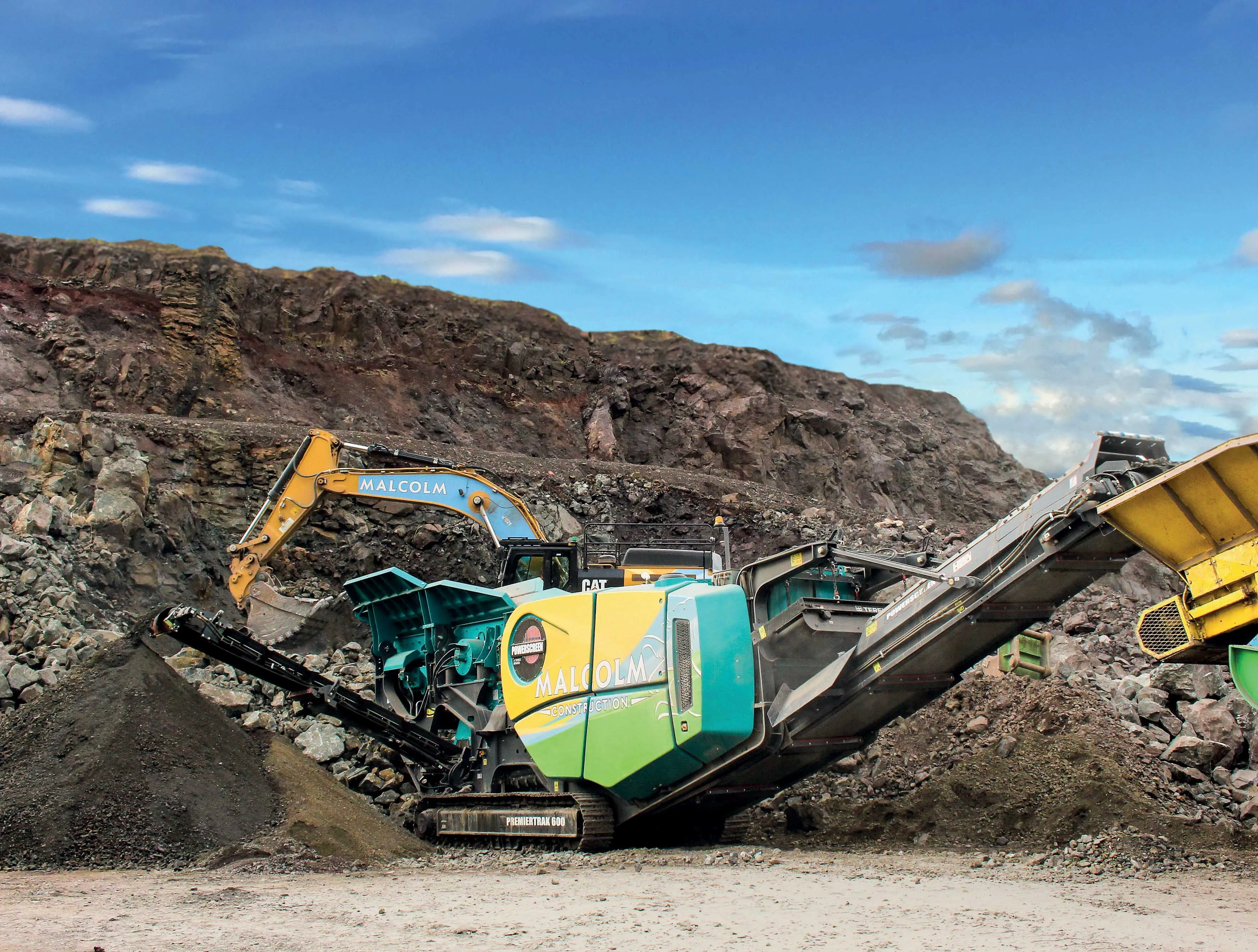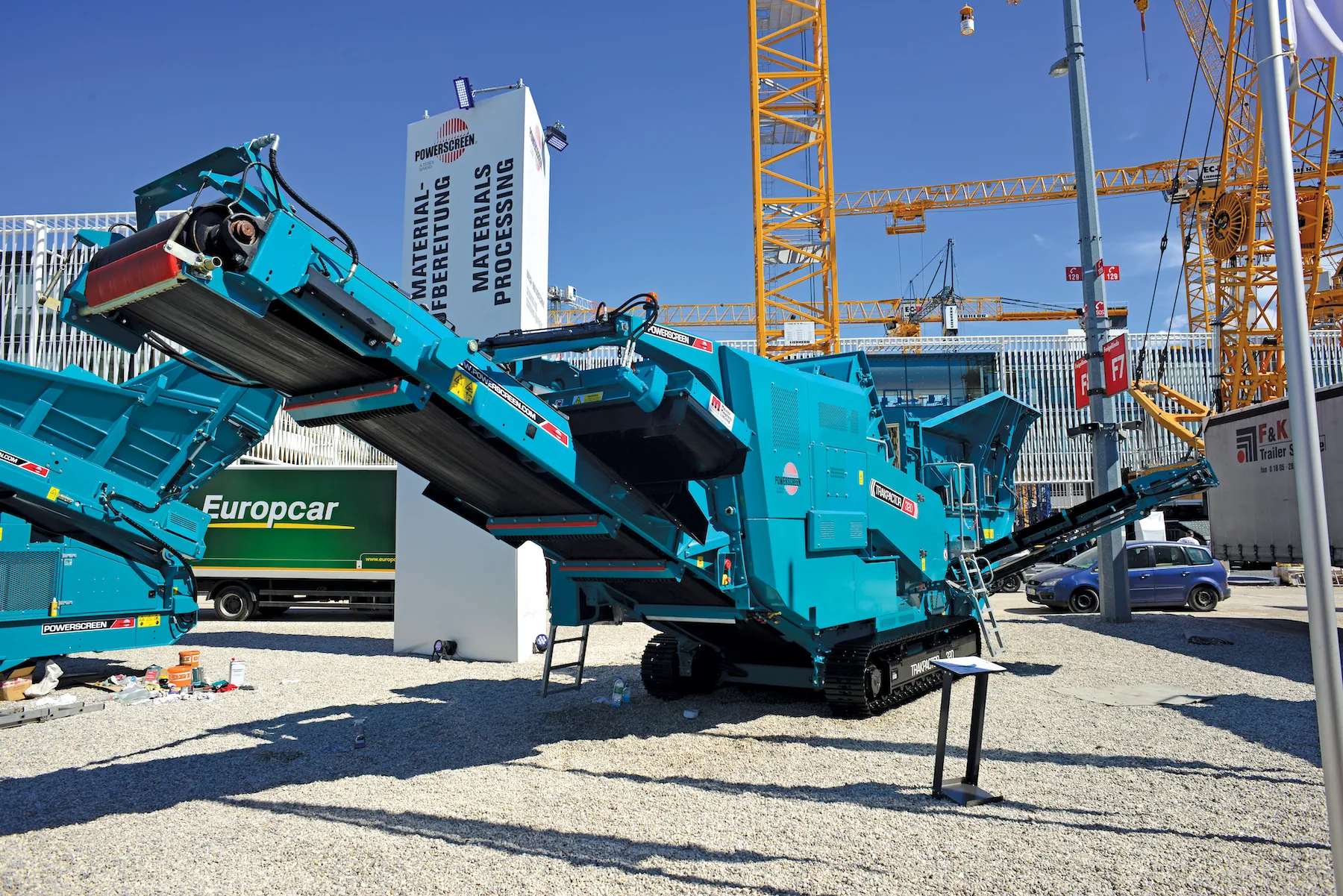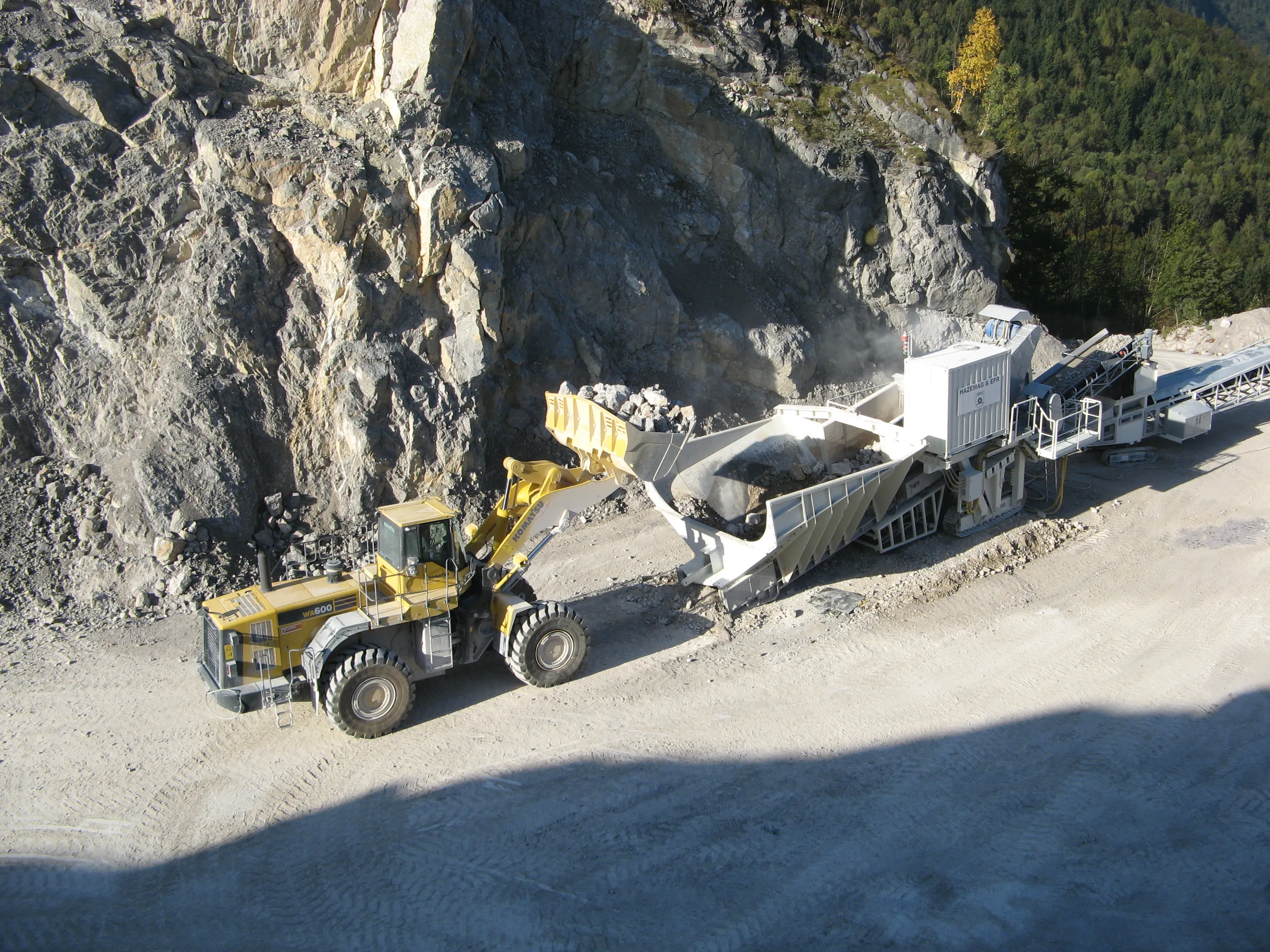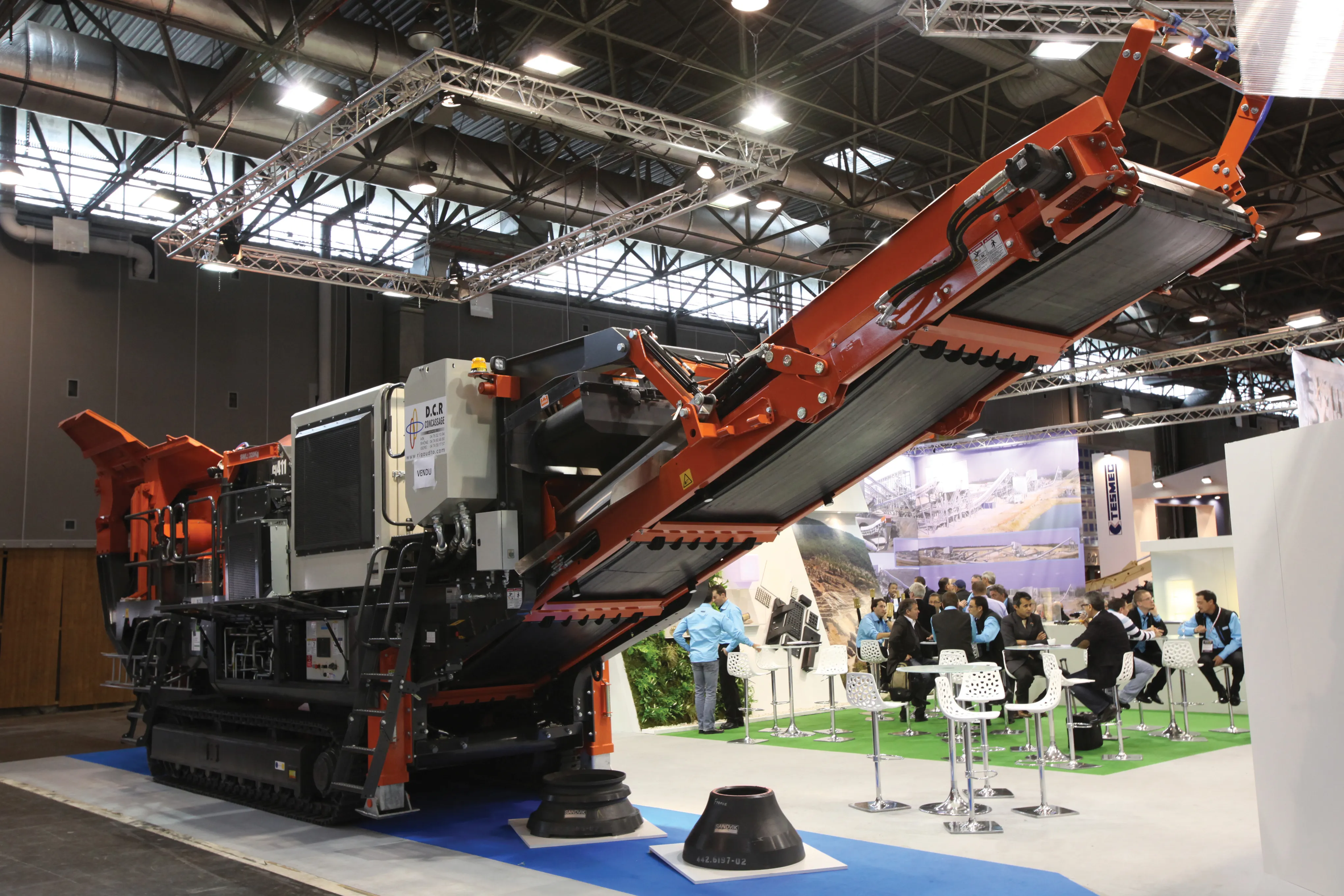Gallagher Aggregates’ Hermitage Quarry, near Maidstone in south-east England, has purchased two MDS trommels from recently appointed distributor Blue Machinery London. The 155tonne M820, is one of the world’s largest tracked mobile trommels. It is joined on site by the smaller 50tonne M515. Both models are fully mobile on crawler undercarriage and feature hydraulic folding stockpiling conveyors for quick set-up once in position.
The M515 is producing fines (-120mm), which fall through the initial holes i
March 22, 2016
Read time: 2 mins
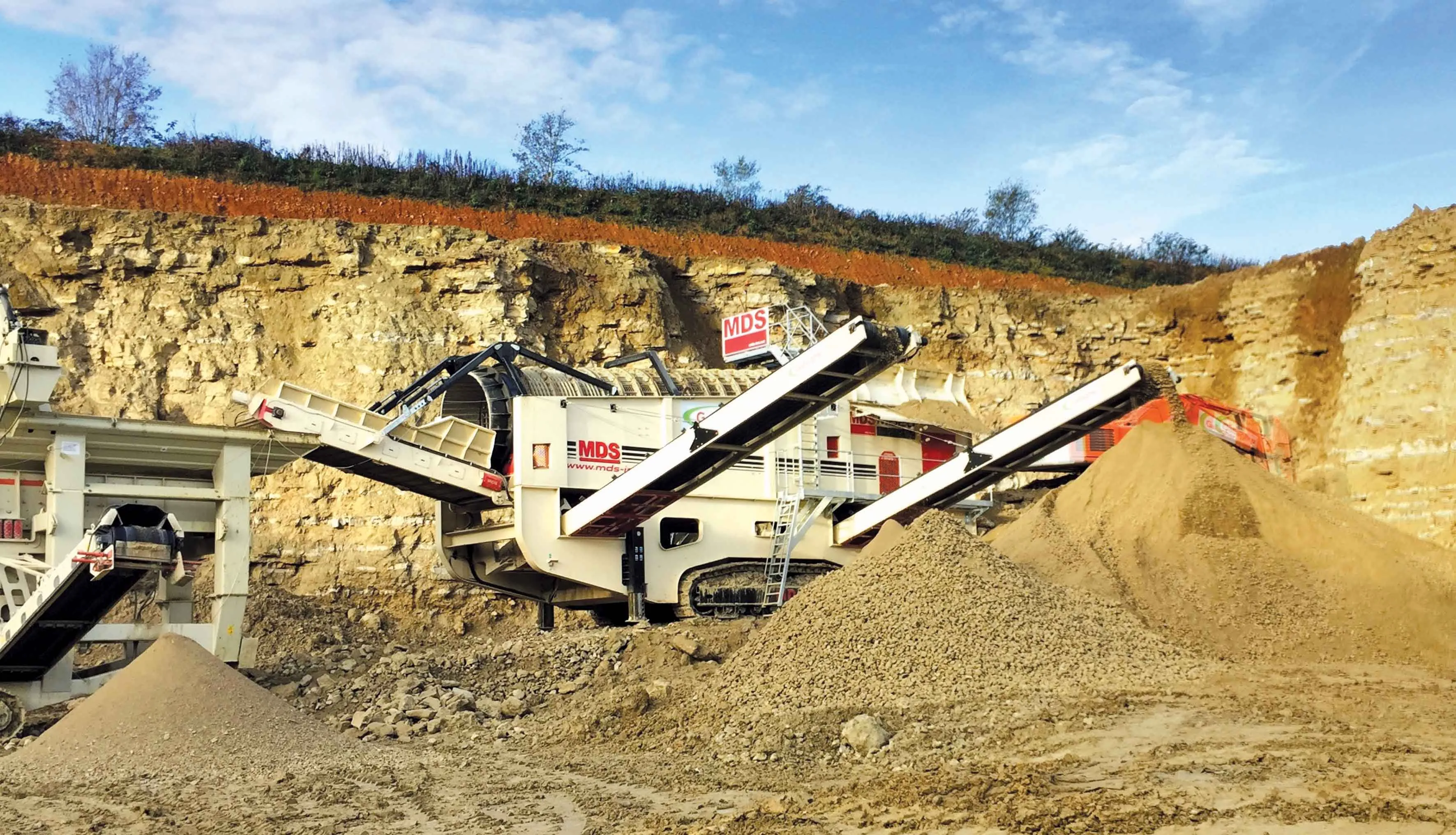
Gallagher Aggregates’ Hermitage Quarry, near Maidstone in south-east England, has purchased two MDS trommels from recently appointed distributor Blue Machinery London.
The 155tonne M820, is one of the world’s largest tracked mobile trommels. It is joined on site by the smaller 50tonne M515.
Both models are fully mobile on crawler undercarriage and feature hydraulic folding stockpiling conveyors for quick set-up once in position.
The M515 is producing fines (-120mm), which fall through the initial holes in the trommel and are removed by way of a swivel fines conveyor to the rear. Mid-sized material (120-250mm) falls through the larger trommel holes towards the front of the machine and is removed via a side conveyor with the largest rocks stockpiled at the front of the machine.
The M515 can process up to 500tonnes per hour of material and the drum diameter and length are 1.5m and 5.5m respectively, with 70mm-120mm and 120mm-250mm screen openings and 60mm-150mm screen thicknesses. The hopper capacity is 30tonnes and the feed mechanism is hydraulic push type. Power is provided by a Cat 4.4 engine and the electronic control system is fully instrumented and user friendly.
The M820 has a 750tonnes per hour maximum capacity and, in this application, is producing three fractions – 0-40mm, 40-80mm and over size. Interchangeable screens allow the aperture sizes to be altered, adding to the versatility of the 2m diameter x 8m long trammel. The M820 can handle rocks up to 1m3 in size.
The plant is also powered by a Cat engine (6.6) and features electronic control; the hopper capacity is a massive 20m³ and the machine is also equipped with hydraulic push feed.
Gallagher Aggregates is using it to clean quarried limestone, with the processed material being fed directly into a jaw crusher via the trommel’s built-in apron feeder.
The 155tonne M820, is one of the world’s largest tracked mobile trommels. It is joined on site by the smaller 50tonne M515.
Both models are fully mobile on crawler undercarriage and feature hydraulic folding stockpiling conveyors for quick set-up once in position.
The M515 is producing fines (-120mm), which fall through the initial holes in the trommel and are removed by way of a swivel fines conveyor to the rear. Mid-sized material (120-250mm) falls through the larger trommel holes towards the front of the machine and is removed via a side conveyor with the largest rocks stockpiled at the front of the machine.
The M515 can process up to 500tonnes per hour of material and the drum diameter and length are 1.5m and 5.5m respectively, with 70mm-120mm and 120mm-250mm screen openings and 60mm-150mm screen thicknesses. The hopper capacity is 30tonnes and the feed mechanism is hydraulic push type. Power is provided by a Cat 4.4 engine and the electronic control system is fully instrumented and user friendly.
The M820 has a 750tonnes per hour maximum capacity and, in this application, is producing three fractions – 0-40mm, 40-80mm and over size. Interchangeable screens allow the aperture sizes to be altered, adding to the versatility of the 2m diameter x 8m long trammel. The M820 can handle rocks up to 1m3 in size.
The plant is also powered by a Cat engine (6.6) and features electronic control; the hopper capacity is a massive 20m³ and the machine is also equipped with hydraulic push feed.
Gallagher Aggregates is using it to clean quarried limestone, with the processed material being fed directly into a jaw crusher via the trommel’s built-in apron feeder.


